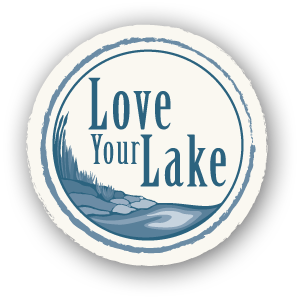Your shoreline was meant to be naturally beautiful. Naturalized shorelines are cost-effective, ecologically responsible, stunning and they add value to your property. They’ll also provide welcome natural habitat for wildlife.
Below are a series of before and after photos that demonstrate the amazing transformation that occurs when shorelines are naturalized. Click each photo to see the results and read testimonials from property owners who are happy to have made the decision to naturalize.
A shoreline rich in vegetation has so many benefits, not the least of which are minimal maintenance, cost-effectiveness and the chance to design something unique. Also, a natural shoreline is the best defence against erosion, as the roots will help hold the soil in place and filter the runoff that flows into the lake.
If you have a grassy shoreline try not to mow it. Short grass acts as a hard surface that allows polluted rainwater to flow straight into the lake.
Why is a natural shoreline important?
Shoreline vegetation acts as a buffer to a host of natural and man-made pollutants. Losing this vegetation exposes shoreline property owners to:
These can negatively impact the aesthetic appeal and limit recreational opportunities. The ideal natural buffer width is at least 30 metres, but any buffer is better than no buffer!
Natural is Beautiful
They’re cost-effective, ecologically responsible and stunning. Your shoreline was meant to be naturally beautiful. Here are before-and-after photos and testimonials from actual shoreline property owners. They all naturalized their shorelines.
Here are before and after photos and testimonials from actual shoreline properties owners. They all naturalized their shorelines. Check out before and after photos,
Six Key Benefits of a Natural Shoreline
1. Maintaining Water Quality
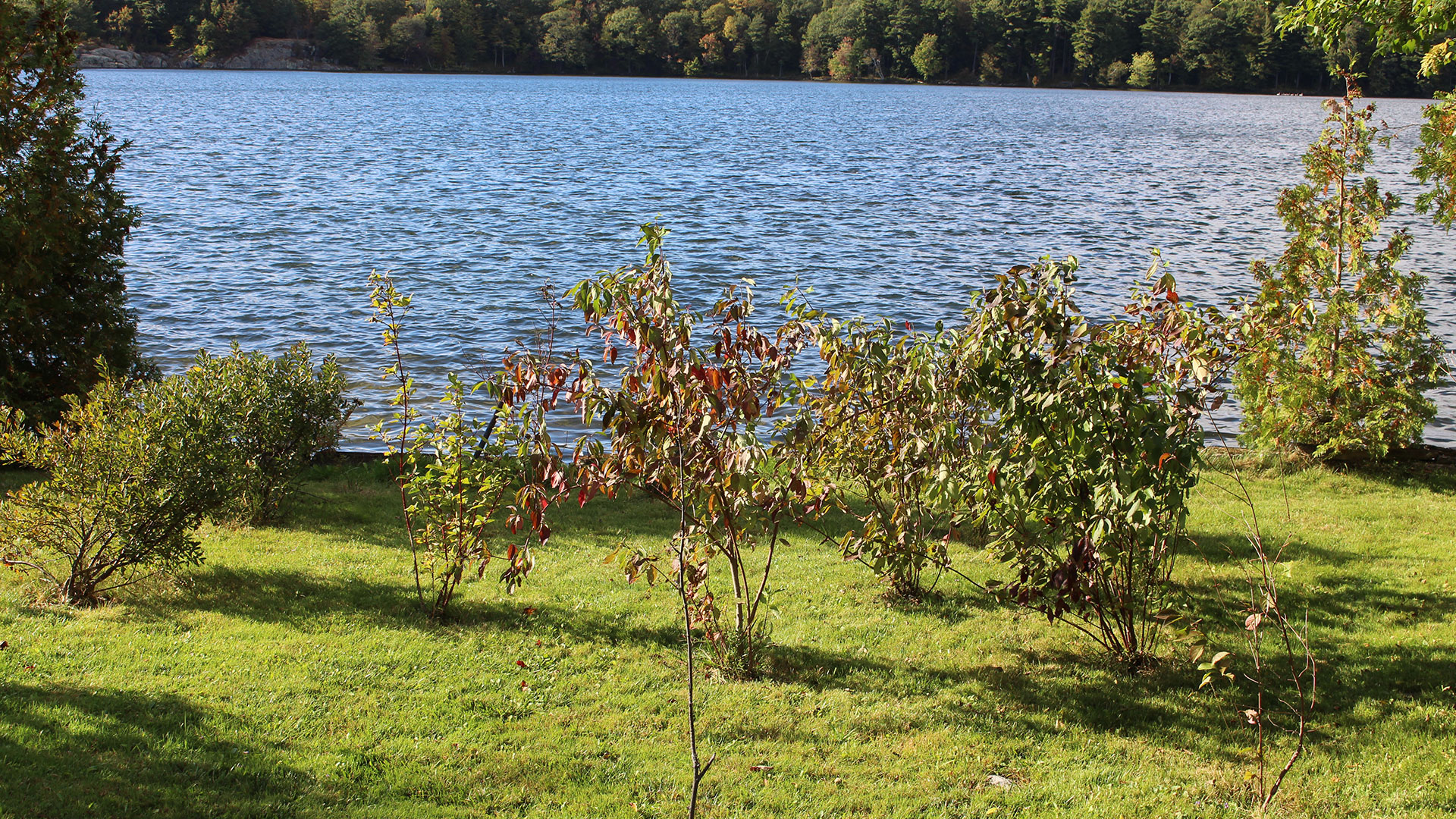
Shoreline vegetation filters polluted and contaminated runoff before it flows into the lake, preventing an altering of the water chemistry and excessive algae blooms.
2. Moderating Temperatures
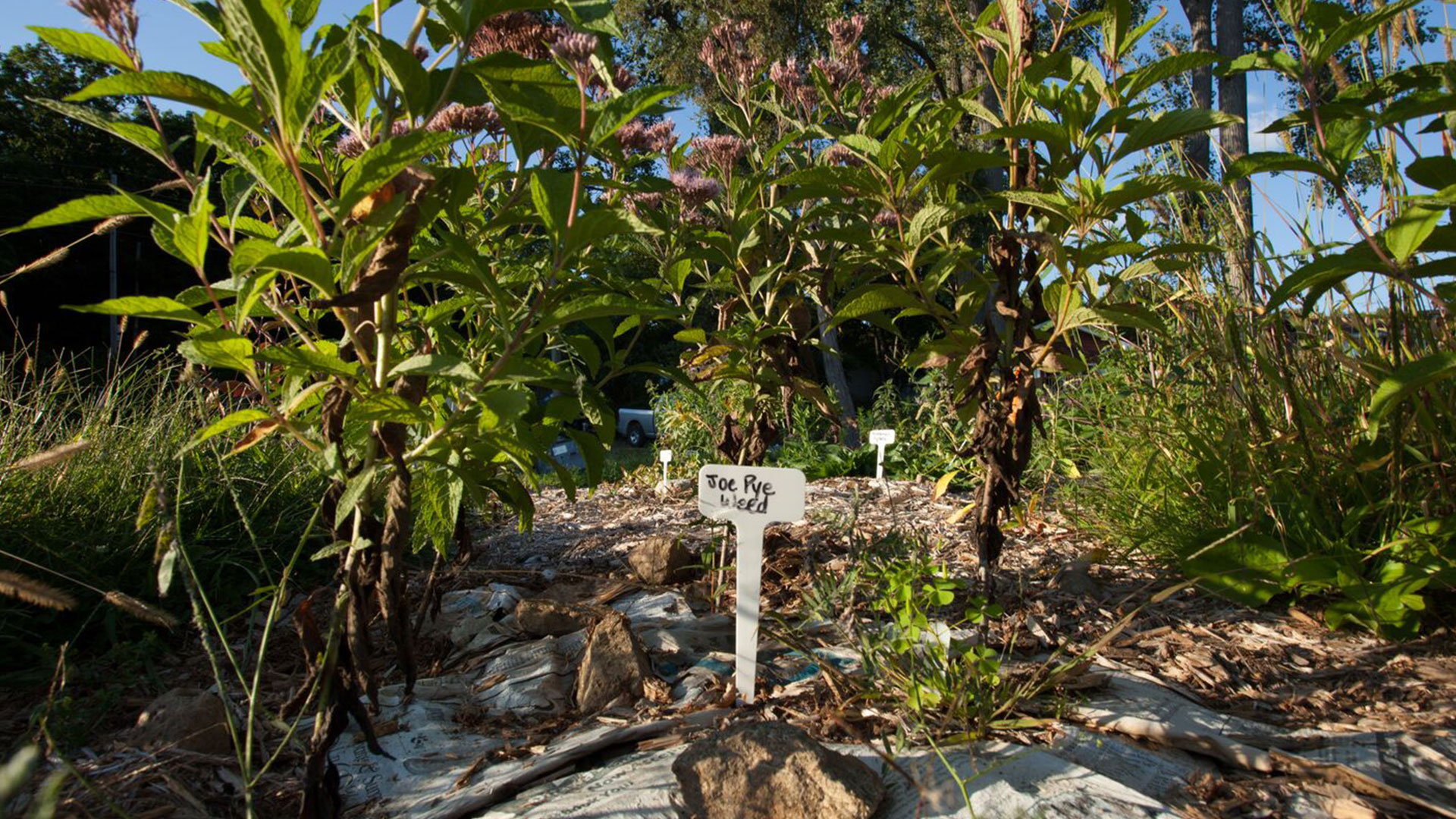
The shade cast by plants provides fish and other wildlife, as well as people, with relief from the summer sun. Shade also reduces water evaporation from the soil. This is helpful for plants that require moist or wet conditions for survival.
3. Creating Wildlife Habitat
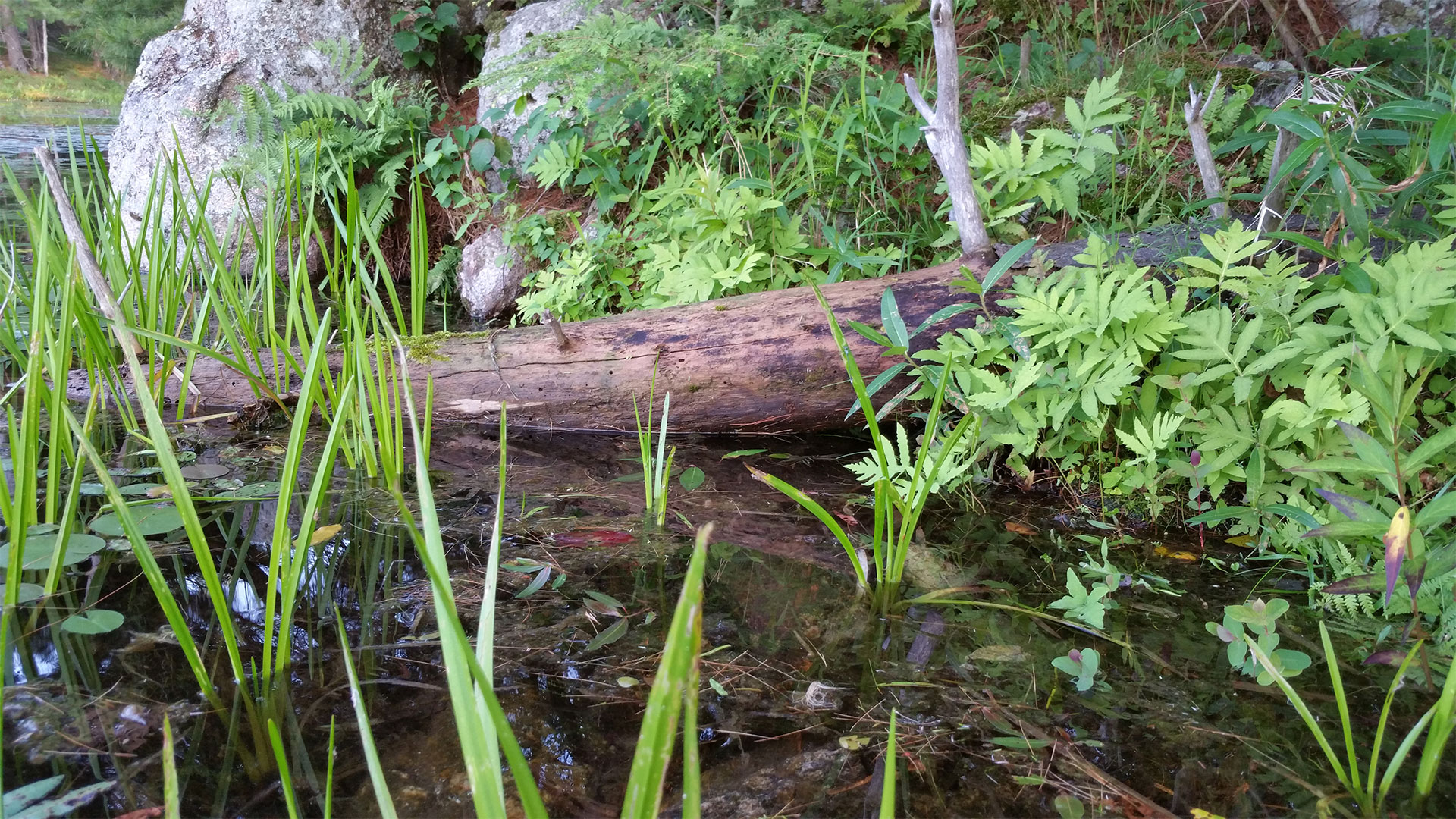
Over 70% of land-based wildlife and 90% of aquatic life depend on shorelines during some point in their lives. Reptiles, amphibians, fish, birds, insects and mammals use the shoreline for mating, rearing young, food, shelter and protection from predators. It’s why shorelines are known as the “ribbon of life.”
4. Mitigating Flood Frequency and Impacts
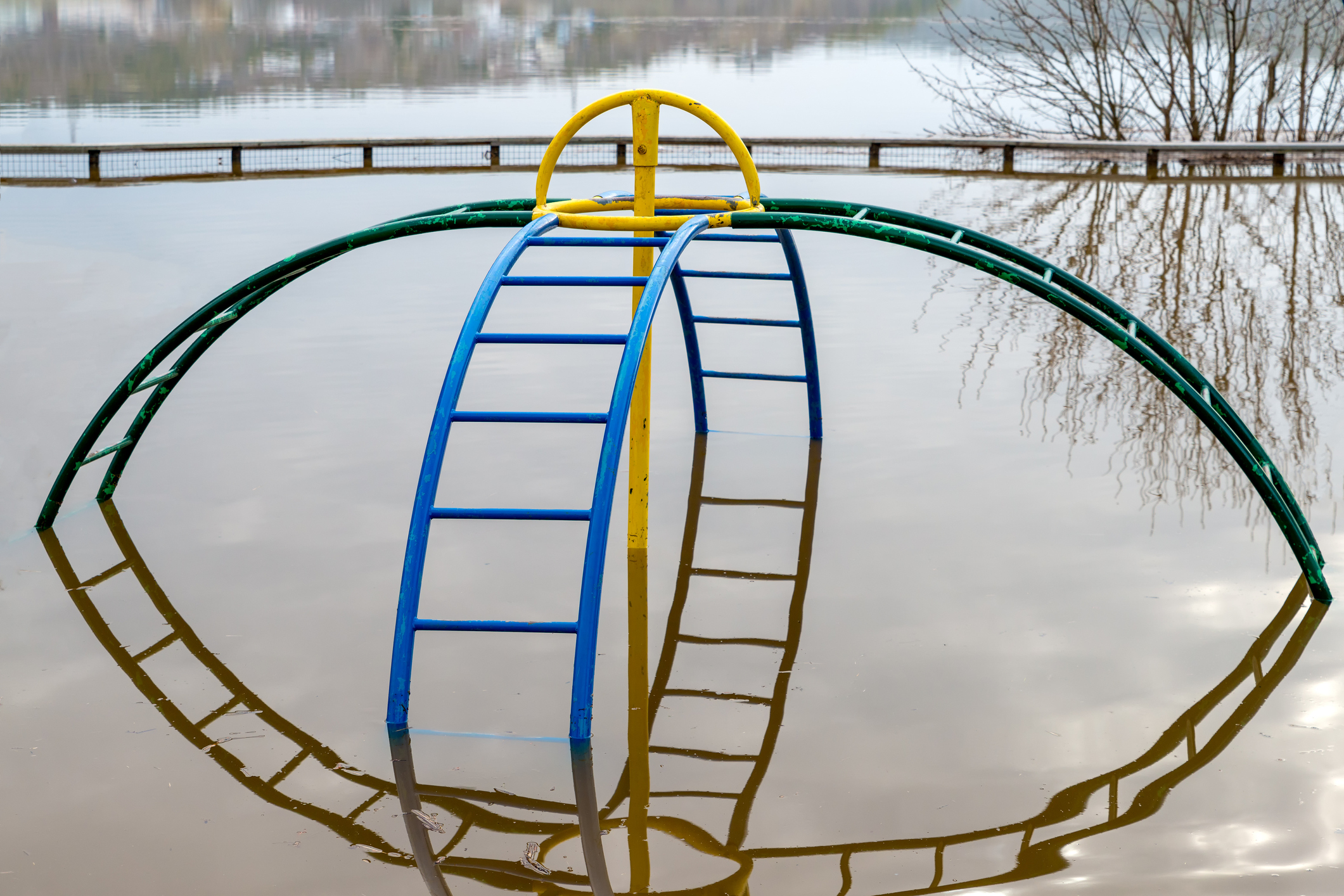
Buffers can reduce flooding by slowing the velocity of surface runoff so it absorbs into the ground and becomes groundwater. This reduces the amount of direct drainage into the lake, limiting flood potential and helping the lake regulate its water levels more easily.
5. Reducing Erosion
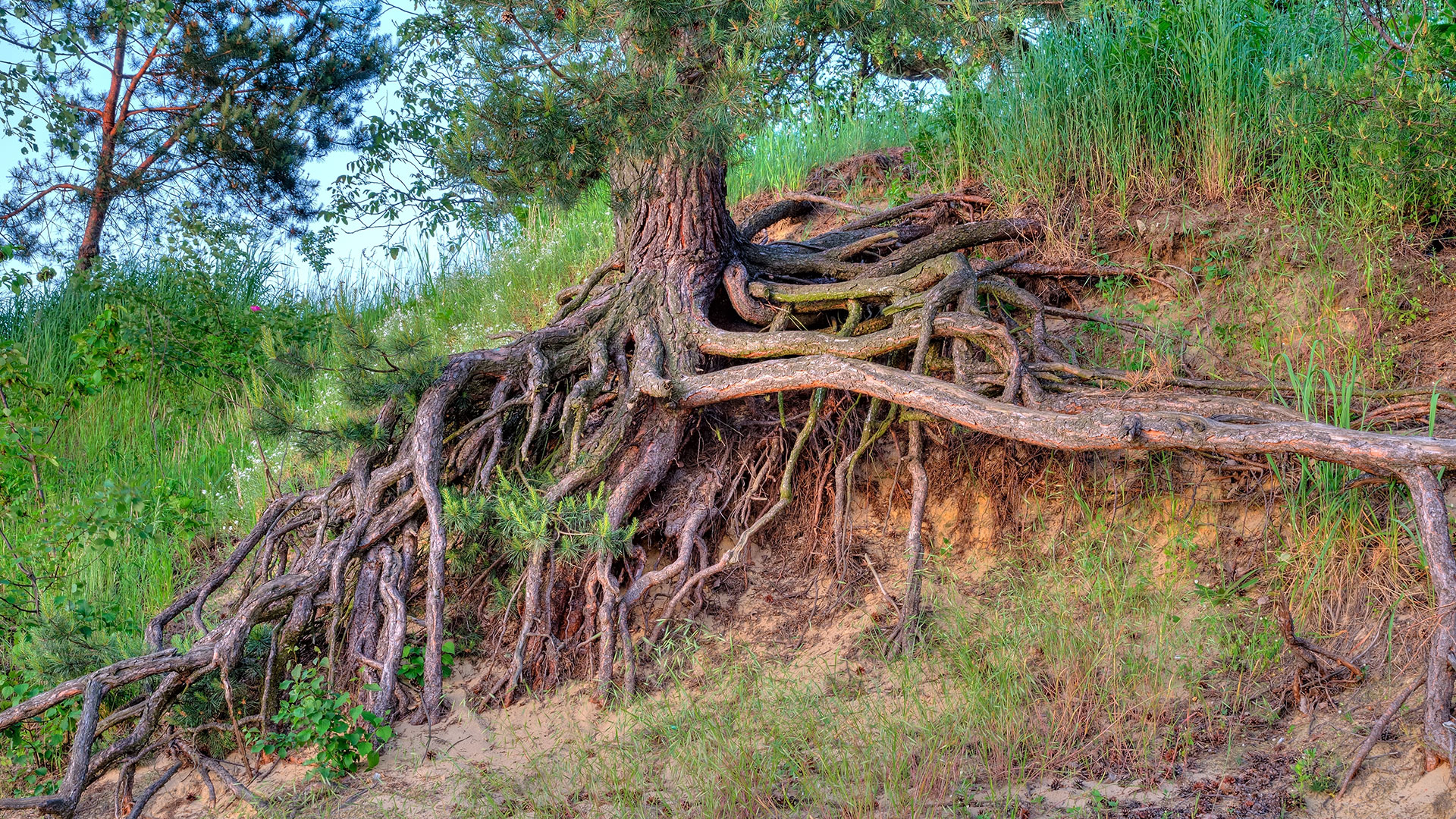
The vast network of roots under a natural shoreline holds soil in place and prevents shorelines against slumping and washing away. The leaves above ground reduce the impact of rain and surface water on the soil surface, and also the severity of wave action from water currents and boat wakes.
6. Maintaining or Increasing Property Values
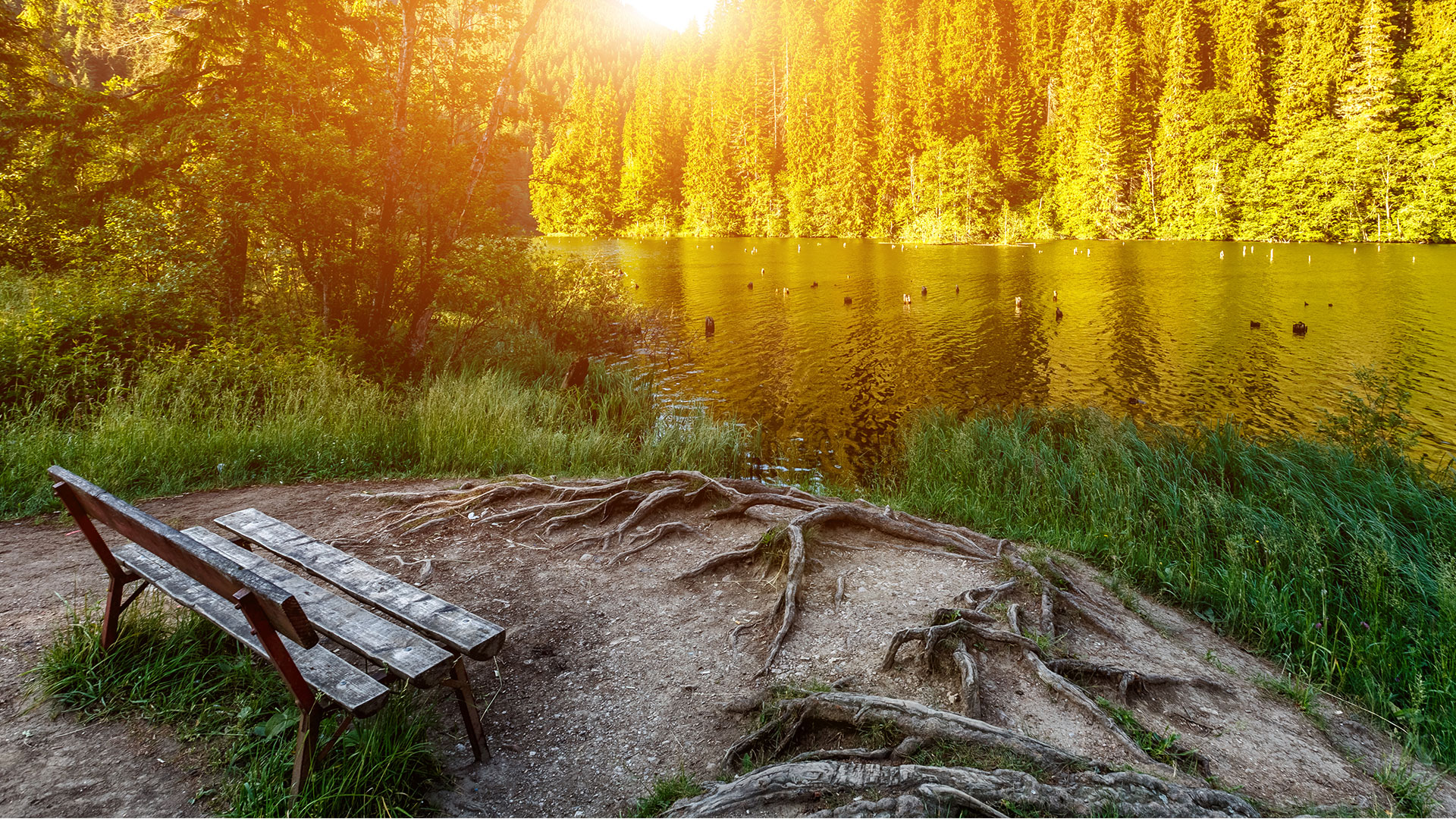
Natural shorelines protect property values from decreasing due to loss of land, wind or water damage, and poor water quality. At the same time, as waterfront views improve, so too does the price of the property.
How To Plant And Maintain A Natural Shoreline
Naturalizing your shoreline can be one of the easiest ways to ensure the health of both your lake and property. Native vegetation is naturally suited to withstand the climate, soil types, and environmental conditions of local and regional areas.
Did you know...
- A combination of shrubs and trees creates the best root system to hold soil and filter water runoff. Trees have large wide-spreading roots; shrubs have smaller deep-penetrating roots. The presence of both creates a basket root system that, like a rebar, ensures soil stability.
- Planting or removing in-water plants may require permitting. Check with your local conservation authority before proceeding.
- Having a natural shoreline can increase your property value, as it’s less likely to erode and it helps improve water quality.
- Fertilizer increases the risk of excess nutrients flowing into the lake and increasing the possibility of blue-green algae blooms.
5 Step Guide To Planting A Natural Shoreline
Creating or re-establishing a natural shoreline takes planning. We have included tools and links to help guide you through the process. If you need help or have a question, reach out and we will be happy to assist. Check out the five step guide to get started:
- Before you begin, determine the conditions of your property and make a layout plan. The former will inform your species choices, while the latter will ensure access to the water and any recreational areas, and low-lying shrubs in areas with better views of the lake.
- To figure out your property condition, consider any existing vegetation. This includes the shade/sun ratio, soil type and moisture levels:
- An abundance of tall trees creates more shade
- To determine your soil type, rub the soil through your fingers and feel for coarseness or smoothness. Sand grains are large and feel coarse. Silt grains are medium in thickness but feel smooth or floury. Clay is fine and feels sticky. Loam is a combination of one or more of the above and usually contains a high content of organic matter
- When choosing plants, refer to Ontario Native Shoreline Plants or National Native Plant Encyclopedia to find suitable plants for your property (please be aware that some of these species are unavailable at local nurseries).
- Contact your local nurseries to find the native plants you would like to use. Check out our Native Plant Supplier List.
- Once you have your plan and your plants:
- Dig a hole large enough to ensure the plant’s roots are completely covered
- Put the plant in the hole and cover with the removed soil and any topsoil you may need to fill in the rest
- Ensure no air in the hole by gently stomping around the base of the plant and packing the soil down
- Leave at least a metre around each plant so they’re not fighting for the same nutrients
- Lay mulch around the base of your plant to protect it from weeds and other predatory plants
- Water your plants well to keep them healthy and to remove any leftover air pockets contained within the soil
6 Most Common Shoreline Plant Suggestions
Different plants thrive better in specific situations. Our experts weighed in to identify the six most common shoreline environments and the plants that work best for each:
Sandy, dry soil: Bush honeysuckle (native), Common or Creeping Juniper, Smooth Wild Rose, Shadblow Serviceberry, Common Spicebush, White Pine, Snowberry, Fragrant Sumac
Sandy, wet soil: Willow’s (pussy willow, black willow, shrubby willow, sandbar willow), Wild Black Currant, Silver Maple, Swamp Rose, Red Osier Dogwood, Showy Mountain-ash, Speckled Alder, Sweet Gale, Tamarack, Bunchberry, Buttonbush
Clay, moist, wet soil: Silky Dogwood, Black Chokeberry, Black Elderberry, Grey Dogwood, Highbush Cranberry, Meadowsweet
Clay, Dry soil: Red Oak, Smooth Wild Rose, Witch Hazel, Saskatoon Serviceberry, Snowberry, Sugar Maple
Loamy, moist, wet soil: Highbush Cranberry, Sweet Gale, Meadowsweet, Swamp Rose, Red Osier Dogwood, Buttonbush, Various Willows
Loamy, dry soil: Bush Honeysuckle, Smooth Wild Rose, Shadblow Serviceberry, Common Spicebush, Red Oak, Saskatoon Serviceberry, Snowberry, Fragrant Sumac
Plant Suggestions: Native Shoreline Plants and National Native Plant Encyclopedia
How to Maintain Your Natural Shoreline
While native vegetation will be largely maintenance-free after two to five years, the first few years will require occasional watering or pruning. We’ve outlined some tips below courtesy of The Natural Edge program.
How To Maintain A Natural Shoreline
Watering
Your new natural shoreline should be watered for:
- The first three years
- During the spring months: April, May and June
- During drought-like periods during the summer months
How much water do plants require?
- Trees and large shrubs require 20-30 litres (4-6 gallons) of water weekly
- Smaller shrubs require 10-20 litres (2-4 gallons) of water weekly
- Ground cover will only require watering when the soils are dry
Water trees and shrubs early or late in the day at the base of their trunk or main stems. This will ensure water reaches the roots before evaporating from the surface, and will limit surface runoff. During times of considerable rain, weekly watering may not be necessary.
Summer watering is only required during periods of drought when all trees and shrubs should receive between 30 and 40 litres (6-8 gallons) of water weekly.
Observable signs of drought can include: small, yellow or brown leaves, drooping leaves, loss of crown leaves, and blistering or cracking bark.
Mulching
Mulch can be made out of wood chips, leaf mould, hemp, compost or a mix of any of these materials. When purchasing mulch, be sure that it is partially composted. It plays an important role to the successful establishment of new shrubs and trees by:
- suppressing unwanted weeds that could compete with new shrubs and trees
- reducing water evaporation from the first few inches of soil
- providing valuable nutrients to the new plants
- insulating and protecting roots from extreme effects of heat and cold
Spring is the best time to re-mulch trees and shrubs, if required. Old mulch should be removed before new mulch is placed, or can be mixed together instead of layered.
Mulch should cover the spread of the roots underground. When adding mulch, it should extend as far out as the bottom branches of the shrub or tree, with a depth of 5-10 centimetres (2-4 inches). The mulch should form a conical shape, being thicker at the perimeter to funnel water inward to the base of the trunk or main stems. And to avoid rotting, the mulch should not touch the trunk or main stems.
Pruning
Pruning is a technique used to help support the growth of trees and shrubs. Most native shoreline vegetation will require little to no pruning at all. However, some pruning will maintain sightlines, provide better access to the water and keep the plants healthy.
- Branches that are dead, diseased or damaged should be pruned to protect the plant from further health risks.
- If necessary, branches can also be pruned to thin a shrub if it has obstructed pathways or sightlines to the water.
- It can be helpful to keep tabs on a shrub or tree over the course of a year to get a better idea of which branches should be removed without compromising the natural shape of the plant.
- Some shrubs and trees produce suckering branches that emerge from underground roots near the trunk or base of the main stem of the plant. While suckers can aid in stabilizing and naturalizing a shoreline, they can also limit the nutrients reaching the canopy layer of the main shrub or tree. For this reason, they should be pruned to ensure the main plant does not die off.
- When pruning trees, make sure you don’t remove the crown bud (the highest budding branch on the tree) as this forces the tree to grow wide instead of tall.
When should you prune?
Late fall and early winter is the best time to prune, as this will minimize sap loss and the threat of fungal or insect infestations. Wait for leaf loss to begin so you have easier access to the branches. Dead branches can be pruned any time.
However, some shrubs, usually those that flower, should be pruned in the early spring before the buds emerge, or after the flowers have died. Removing the dead flowers can help the shrub leaf out nicely by encouraging nutrients to access the leaves.
How much needs to be pruned?
Pruning should never remove more than 25% of the crown of the shrub or tree. This will reduce its vulnerability to fungal or insect infestation. Branches should compose at least two-thirds of the shrub or tree, to ensure that the vegetation has enough mature leaves to support growth and survival.
Once shrubs begin to show signs of aging, rejuvenating pruning can be done to encourage new growth to emerge. Gradual rejuvenation involves removing old growth by one-third every year until all old growth has been removed. Complete rejuvenation involves cutting the entire shrub back until just the stump remains, about 15-25 centimetres (6-10 inches) above the ground.
How to Prune
Before you start, look over the entire shrub or tree to determine the right branches to trim.
When you cut, do so at the branch collar (where it is attached to its parent branch or to the tree’s trunk) to reduce the risk of unwanted damage and infestation, and allow for faster healing.
And be sure to clean tools after every tree or shrub before starting on another one, as infection and disease can spread from plant to plant via pruning tools. Possible disinfecting solutions can include one part bleach, dish soap or pine oil cleaner in three parts water.
To successfully prune shrubs and trees without tearing bark or splitting wood, and to
limit infection or infestation, follow these steps:
- Make a wedge shape cut, roughly one-quarter of the branch diameter, on the underside of the branch, and approximately 12 cm (5 inches) from the branch collar. This wedge-cut is not intended to remove the branch.
- Approximately 20-30 cm (8-12 inches) away from the branch collar, farther than the wedge-cut, cut the branch completely, starting at the topside of the branch. This will leave a branch stub with the initial wedge cut.
- Cut off the stub by cutting parallel to the branch collar. Do not cut the collar. Cutting the collar can damage the tree or shrub by increasing healing time and susceptibility to infection.
For diagrams and more pruning tips, download the free Native Plant Care Guide courtesy of The Natural Edge.
Habitat Creation for Wildlife
Shoreline vegetation loss can lead to the decline of species diversity as vegetated shorelines are home to over 70% of land-based wildlife and 90% of aquatic species at some point in their lifetime.
4 Ways To Improve Shoreline Habitat for Wildlife
Plant native trees and shrubs along your shoreline
As plants along the shoreline grow, the branches and leaves will overhang creating shade. Small fish and frogs often hang around in shaded areas as it protects them from the sun and birds that may be preying on them. As well, overhanging plants provide a source of food as insects will often fall into the water for the waiting fish.
Leave fallen trees
Trees and branches that have fallen into the water or along the shoreline should be left alone. Woody structures such as trees and branches are great fish and wildlife habitat. They act as cover for small fish and other aquatic life as they can be used to hide from predators, and protect species from the sun and overhead birds. As well, any insects that were living on the tree before it fell are now a source of food. In addition, these logs create an easy transition from land to water for many frogs and turtles. Turtles can often be seen basking on downed trees to warm themselves up.
Leave aquatic vegetation
Aquatic vegetation such as water lilies, and emergent plants such as bulrushes are another key habitat feature for small fish and amphibians. Many people remove these plants as they want beach-like swimming areas. However, by pulling these “weeds” shoreline property owners are directly destroying primary habitat. The best way to access your lake is to clear a small area through the existing vegetation to get to deeper water, and leave the rest untouched (removal of aquatic plants may require permits, please contact your local Conservation Authority or Municipality) The aquatic vegetation is important as it is used for shelter to escape predators, protection from the sun, and food.
Create habitat
In addition to naturally occurring habitat, you can also create habitat by placing bird and bat houses on your property, and by planting a native wildflower garden to attract pollinator species.
Download your free Shoreline Habitat Creation Manual provided by The Natural Edge program for more details.
Additional Resource Downloads
- The Riparian Zone
- Algae in Ontario
- The Benthic Zone
- What is a Watershed
- Aquatic Invasive Species of Ontario
- Gardening for Pollinators
- Natural Insect Control
- Gardening for Butterflies
- Bird Feeding Handout
- How to Build a Bat House
Additional Online Information
Need Help Naturalizing Your Shoreline?
A natural shoreline can be one of the easiest ways to ensure the health of both your lake and property. The Natural Edge program has partner organizations in Ontario, Saskatchewan, and Alberta who can assist you in the naturalization of your shoreline. We are currently working on expanding further across Canada to help as many landowners as possible.
When you call for help, we will determine if you qualify for a site visit. If we visit your property, we would conduct a shoreline assessment and work with you to create a personalized planting plan to best suit your property, taking into account areas of concern, access points, seating areas and personal preferences. Once you approve the planting plan we will schedule a planting date and come fully equipped with everything needed to complete the naturalization.
Our specialists create planting plans based on land characteristics (soil type, moisture level, etc…), and landowner’s preferences (sight lines, heights, flowering vs non flowering, etc…) doing our best to customize it to your needs.
For information about The Natural Edge program, contact Watersheds Canada (program coordinator) at 613-264-1244 or visit Watersheds.ca
Eastern Ontario
Watersheds Canada
Natural Edge Program Coordinator: Chloe Lajoie
115-40 Sunset Boulevard
Perth, ON K7H 2Y4
613-264-1244
Muskoka Watershed Council
Watershed Planning Technician: Rebecca Willison
70 Pine Street
Bracebridge, ON P1L 1N3
Rideau Valley Conservation Authority
Lake Planning: Meaghan McDonald
3889 Rideau Valley Dr.
Manotick, ON K4M 1A5
613-692-3571
Quinte Conservation
Maya Navrot
Outreach and Stewardship Coordinator
2061 Old Highway #2, Belleville ON, K8N 4Z2
613-968-3434
The Land Between charity
Mailing: Box 1368, Haliburton, Ontario, K0M 1S0
Email: info@thelandbetween.ca
Phone: 705-457-1222
Field Office: 6712 Gelert Road, Portable Building, Haliburton
Junction Creek Stewardship Committee
Miranda Virtanen (she/her)
Executive Director
30 St Anne Rd, Greater Sudbury, ON P3C 5E1
office: 705-525-8736
Kawartha Lake Stewards Association
Kim Ong – Director
kim.ong@klsa.info
264 Bass Lake Rd.
Trent Lakes, ON
K0M 1A0
Join our community
Stay up-to-date on the Love Your Lake program by receiving free updates on Canada’s lakes and rivers.
Program co-ordinated by:



